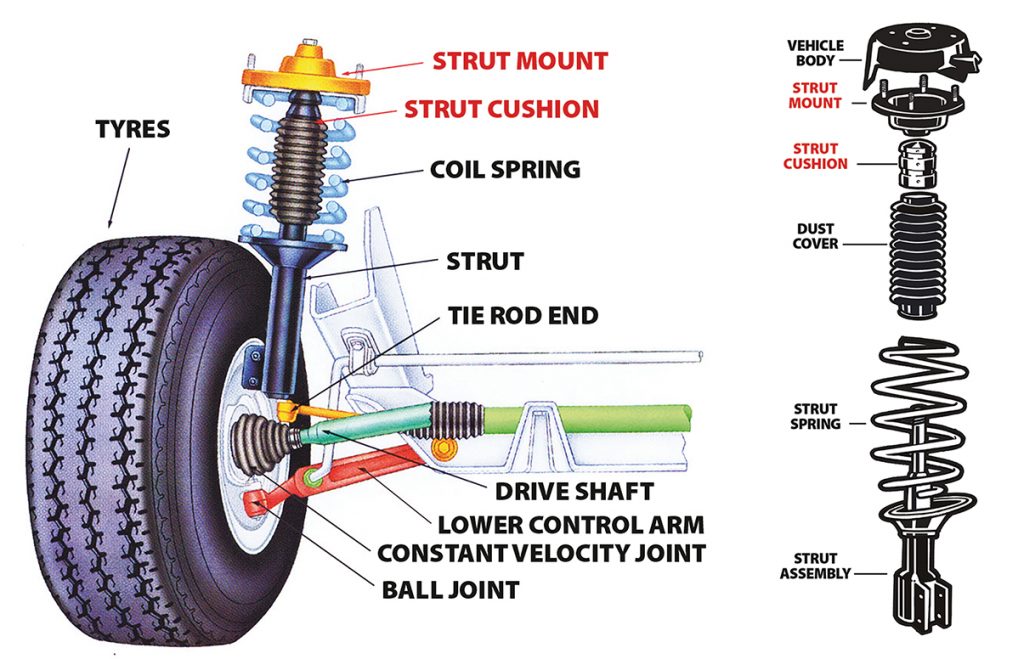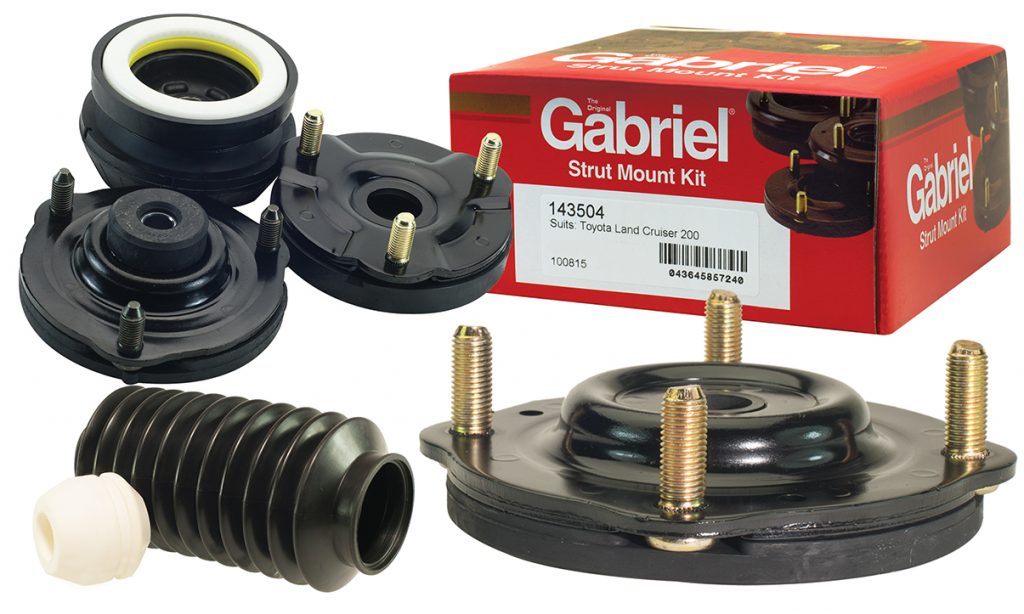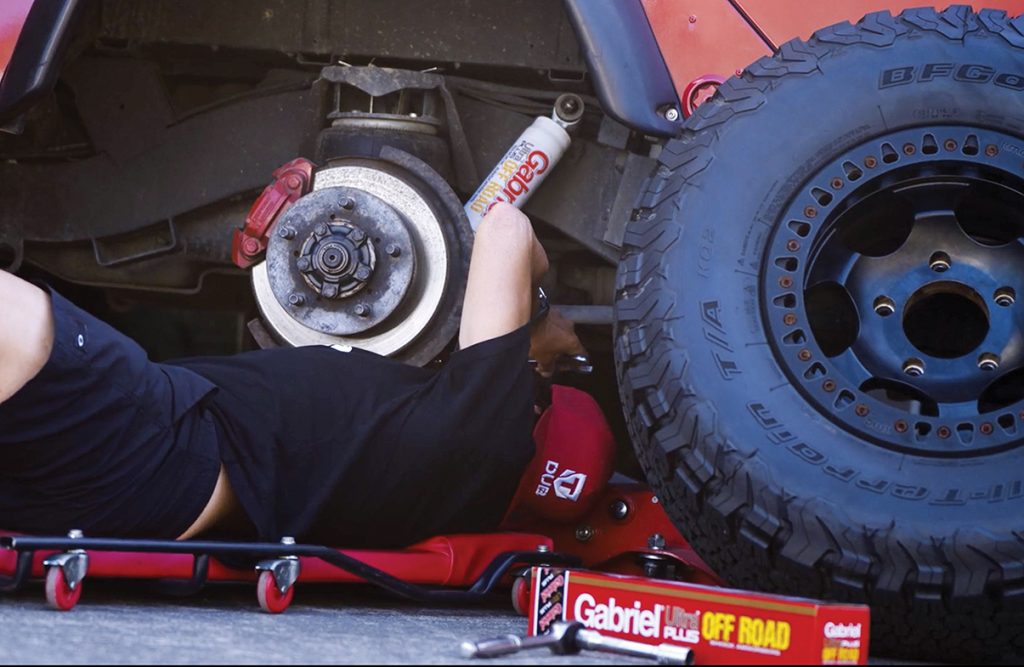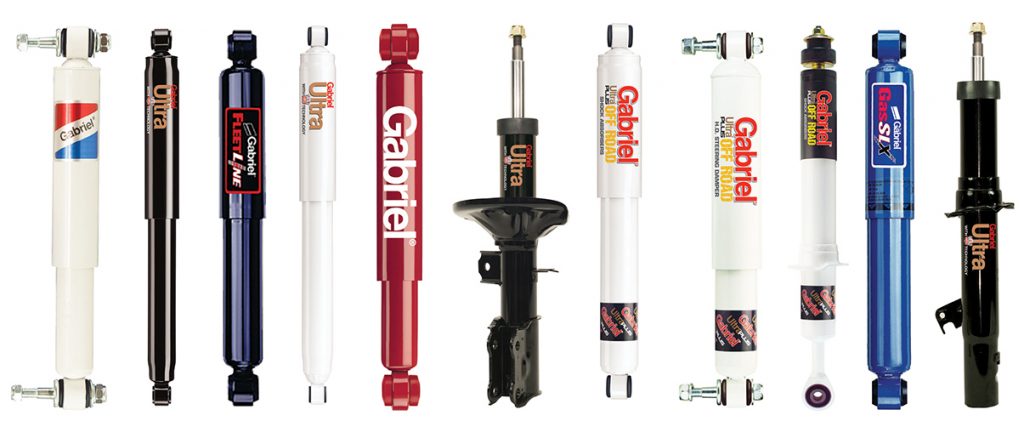MAINTENANCE PAYBACK: SMOOTH AND DEPENDABLY SAFE RIDING
Gabriel explains that peak vehicle performance depends on ride control maintenance

As nearly every driver knows, it is easy to delay or ignore the kinds of basic maintenance that guarantee optimal performance of something we depend upon each day: our cars.
Gabriel reminds the public that along with oil changes, bringing a vehicle to a professional technician for regular maintenance is important to ensure that every road trip is a good one.
It says what is surprising to realise is how basic ride control maintenance affects so many components which are critical to a vehicle’s safe operation.
The suspension system’s role in determining the ride
A vehicle’s ride control is basically its suspension system, primarily made up of shock absorbers, struts and springs.
Struts – shock absorbers with a spring – are in almost all cars on the road today and, like shock absorbers, they are designed to absorb and dampen road feedback.
Struts consume less space under the bonnet than shock absorbers. This is an attractive feature with the rising popularity of compact cars, although some new cars still have rear shock absorbers if space is not at a premium.
Drivers demand a lot from their shocks and struts and need to remember that though they seldom fail completely, they degrade and wear out over time.
Struts use different types of springs, but all share the important task of holding a vehicle up, maintaining the correct height (distance between it and the road), and controlling its centre of gravity while stabilising the vehicle.

Springs can wear out or even break, compromising a vehicle’s safety and performance, and should be inspected and replaced when necessary.
Rubber bushes, located on tops and bottoms of springs, prevent damaging metal-to-metal contact and should be replaced along with the springs.
Struts take a beating trying to keep tyres connected to bumpy, challenging road surfaces.
They do the heavy lifting, working with springs to reinstate correct ride height while allowing all undercar parts to operate in unison for a smooth, dependable ride.
Because struts are a structural part of a vehicle’s suspension and steering subsystems, they are directly connected to alignment, which should be checked and adjusted after any ride control servicing.
On top of struts and springs, holding everything together is the strut mount.
Sometimes replacing the strut mount, springs and all, is needed when a bearing within the unit has failed.
Because replacing individual parts can create pressure discrepancies between old and news springs and struts, potentially causing other issues, Gabriel says it is advisable to use a professional service technician who understands the importance of replacing the entire strut mount when necessary.

By-products of neglect: brakes, tyres and alignment issues
One of the key functions of shocks and struts is to help control a vehicle’s centre of gravity while negotiating changing road surfaces.
So, what happens when ride control is not properly maintained? For starters, braking can be compromised.
Engineers design vehicles so that front brakes do 80 percent of the braking and the rear brakes manage the remaining 20 percent.
A vehicle’s front end can nosedive during braking and worn shocks may allow the vehicle to experience this more than under normal conditions.
If shocks are worn, it can also mean they are unable to help the vehicle return to where it was before stopping.
Those front brakes are being asked to stop more weight than they were designed to handle, overworking in response to ride control failure.
The result is an unnaturally longer stopping distance, more frequent braking, and premature wear and tear of front brakes.
When a vehicle is sitting in a parking lot not moving, it has a certain centre of gravity, and when you start to move, that centre of gravity moves around, front to back, side to side as you manoeuver your vehicle.
When you hit the brakes, all the weight is going to shift forward, and when it shifts forward, the job of the strut, a good, properly working strut, is to make sure it gets the centre of gravity back to where it belongs as quickly as possible, holding it there to avoid any problem.
Tyres suffer, too. Irregular tyre wear occurs when shocks and struts start to fail, producing what mechanics call a cupped wear pattern, or wide strips, running diagonally across the tread.
Worn or failing shocks and struts responsible for maintaining firm contact between the tyre and the road allow tyres to bounce over road surfaces, wearing uneven bits of rubber off and leaving them less than perfectly round.
Tyres not performing as they should can cause noisy vibrations, an uncomfortable ride and, ultimately, ride instability or control issues.

Check the struts for safe, reliable performance
As the current design of more vehicles relies on the ride control system to maintain basic control, the more important it is to make sure it is performing properly.
Proper inspections are more crucial than ever, and Gabriel says a simple visual inspection of all components of the ride control system is recommended once yearly or every 20,000km, while a more in depth inspection or even replacement is recommended every 80,000km.
Finally, Gabriel says it is helpful to remember that the shocks and struts charged with maintaining secure contact between a vehicle and the road begin a gradual decline once in use.
Failure to inspect and replace worn shocks and struts has an impact on critical ride control components, including brakes, tyres, alignment, fuel economy and steering.
Though the ride may still feel comfortable, the vehicle’s performance and safety could be compromised.
For more from Gabriel, visit www.gabrielshocks.com.au






